Tech geeks who often pay attention to graphics cards should notice that the graphics card market is not very quiet recently.
Last year, high-performance graphics cards were hyped into luxury goods by the mining wave, causing DIY players to complain. Now the wave has receded, and graphics card prices have gradually returned to normal.
In this situation of ups and downs, Intel broke in with the newly released Arc discrete graphics card. After nearly 20 years of “red and green wars”, can Intel, which has suddenly emerged, become a “spoiler” in the graphics card market as players wish?
Table of Contents
Still a familiar recipe, still a familiar taste
Strictly speaking, Intel’s entry into the discrete graphics card market is not a crossover.
Intel’s research on graphics chips can be traced back to the 1970s. During the millennium, it also launched a series of discrete graphics products.
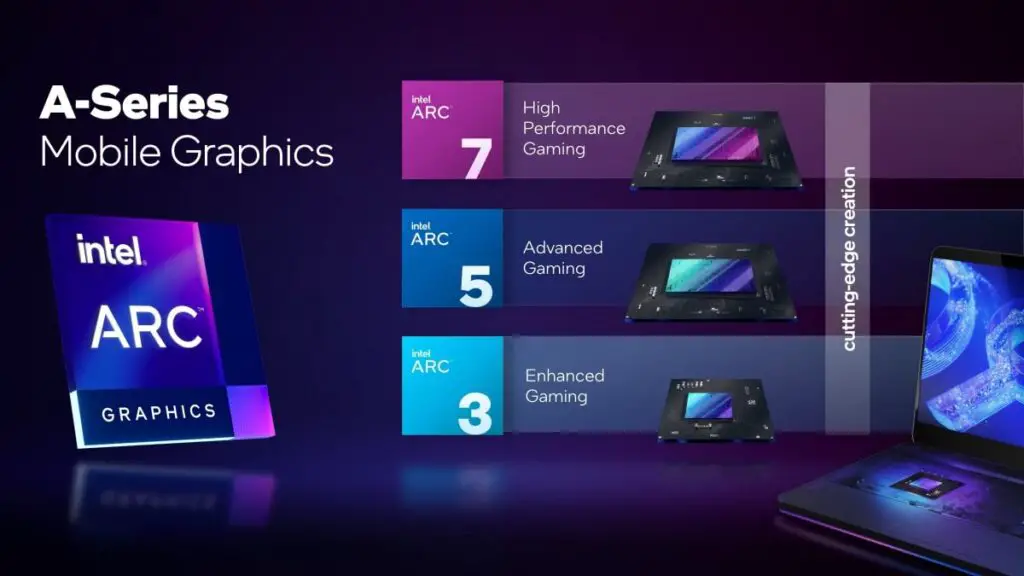
However, after that, Intel’s focus on graphics processing gradually shifted to integrated graphics cards. Now when people think of Intel graphics cards, the first thing that comes to mind is the core graphics card that was born on the Core processor in 2010.
At last year’s Intel Architecture Day, Intel previewed plans to return to the discrete graphics market and announced a new graphics card brand called Arc.
Now, nearly a year later, we can finally get a glimpse of what the first Intel Arc graphics cards really look like.
Intel released the Arc A series of discrete graphics cards for notebook mobile terminals. There are three models, Arc 3 for mainstream games, Arc 5 for performance games and Arc 7 for hardcore performance games.
The naming of Arc 3, 5, and 7 is exactly the same as that of the Core processor, and users who are not familiar with the product can roughly judge the performance difference of different series through a simple numerical difference.
Compared with the naming method of A/N next door, Arc is obviously more friendly to novice users.
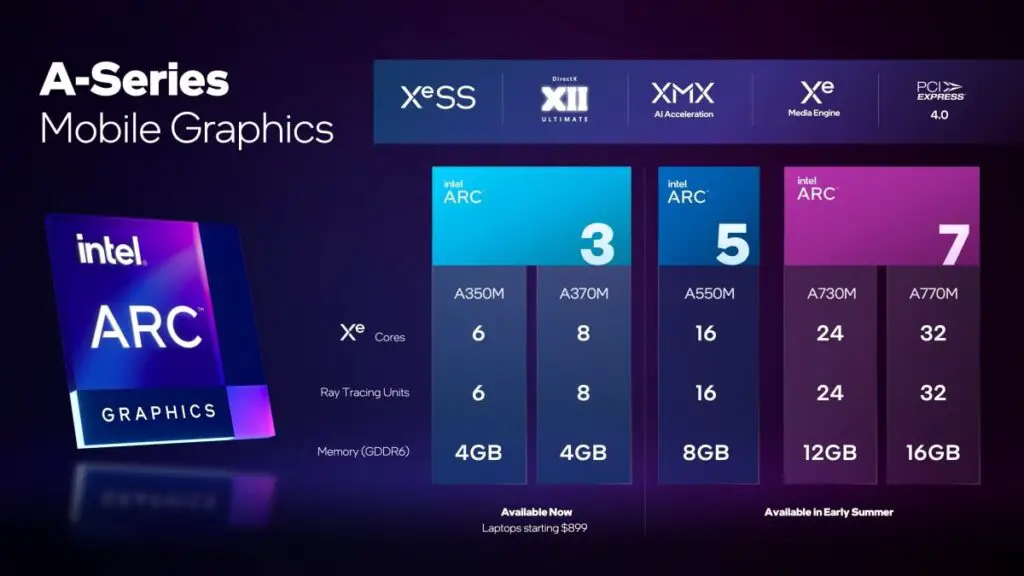
The three series include A350M, A370M, A550M, A730M, and A770M, a total of 5 products. The difference in performance is reflected in the number of Xe cores, clock frequency, and memory capacity of the core computing unit.
Intel said that laptops with Arc 3 series graphics cards will be available soon, while Arc 5 and Arc 7 series will be a little later, and Intel plans to launch in the second quarter of this year.
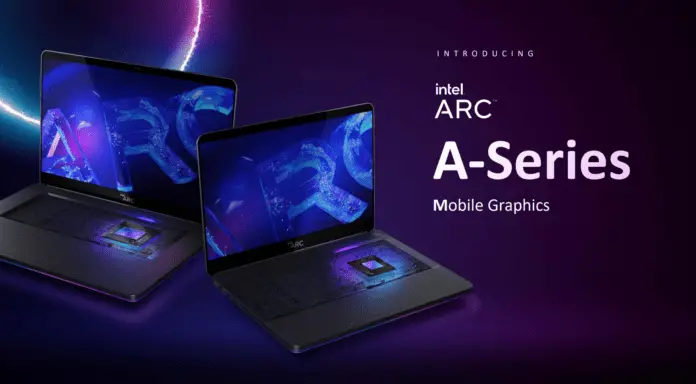
In terms of process technology, Arc A series graphics cards use TSMC N6 process, and we can expect Arc’s performance in power consumption control.
Before that, Intel answered the question that most people are more concerned about: How is the performance of the Arc graphics card?
The best partner for Evo computers
Before looking at the performance comparison, it is worth noting that Intel has only announced the game performance of the entry-level Arc 3.
So, if you’re looking forward to seeing Intel release a top-notch graphics card that can rival Nvidia and AMD, you can quell your curiosity for a while and wait for the Arc 7 to debut this summer.
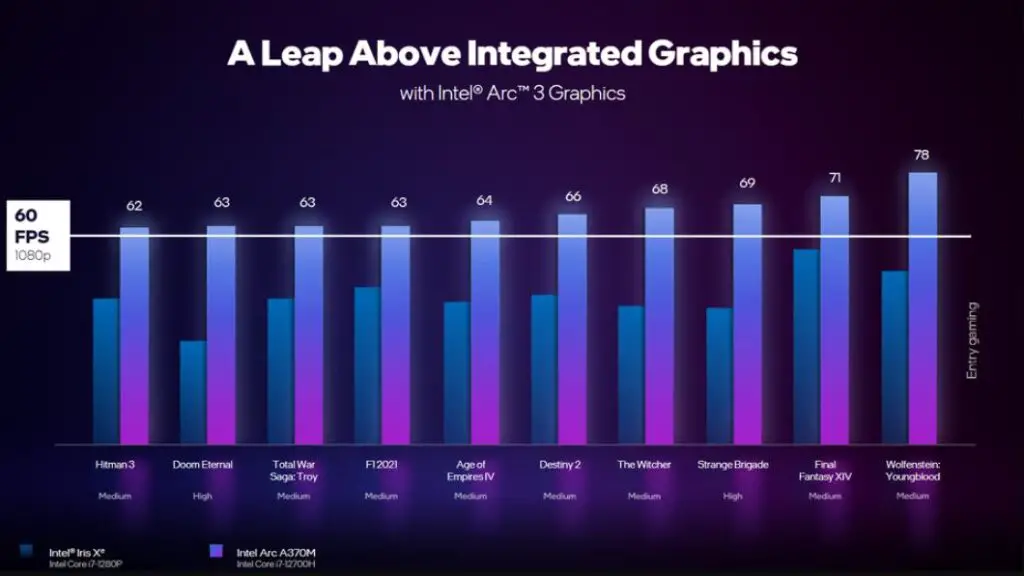
According to the game test released by Intel, the A370M of Arc 3 can smoothly play mainstream games such as Destiny 2 and The Witcher 3 at a frame rate of 60FPS under the conditions of 1080P resolution and medium quality.
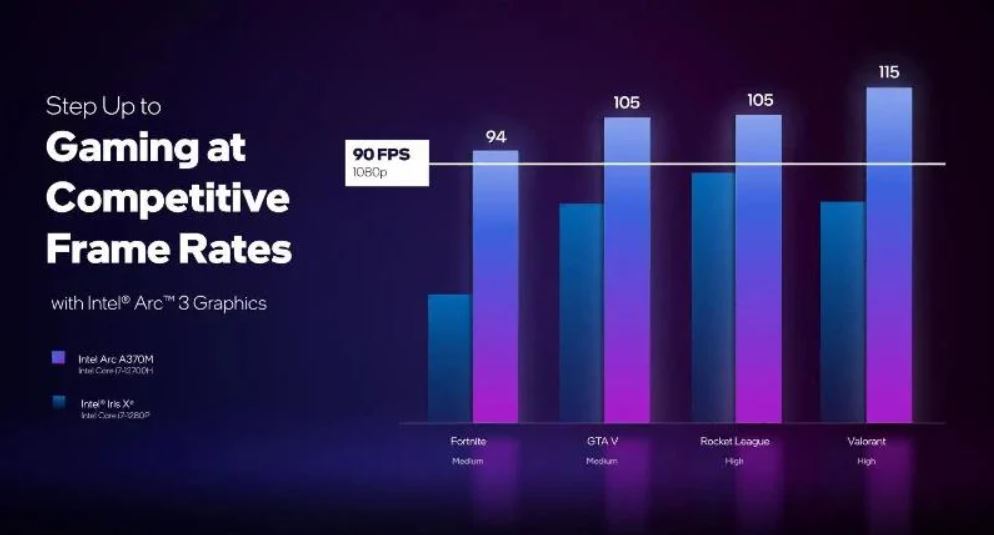
When playing mainstream online games such as Fortnite and Rocket League, the frame rate can be maintained above 90FPS, which can meet the gaming needs of most light players.
Compared with Intel’s new-generation Iris X core display, the A370M basically reaches the standard of smooth running of mainstream games.
As for the recently launched 3A masterpieces such as “Cyberpunk 2077” and “Elden Ring”, it is still too reluctant for the entry-level Arc 3. This is a “porcelain work” that can only be covered by high-performance graphics cards above Arc 5. “.
In terms of content creation, A370M has good performance in Handbrake, Da Vinci, Premiere Pro and other software. For example, in some transcoding and rendering work, A370M has about 2 times performance improvement compared to Iris X core display.
At this time, you may have to ask: Does it make sense to compare the performance of a discrete graphics card to a core graphics card?
Arc is still of great significance for ultra-thin and thin and light notebooks that pursue portability. Intel released version 3.0 of the Evo specification earlier this year, including the introduction of support for Arc discrete graphics.
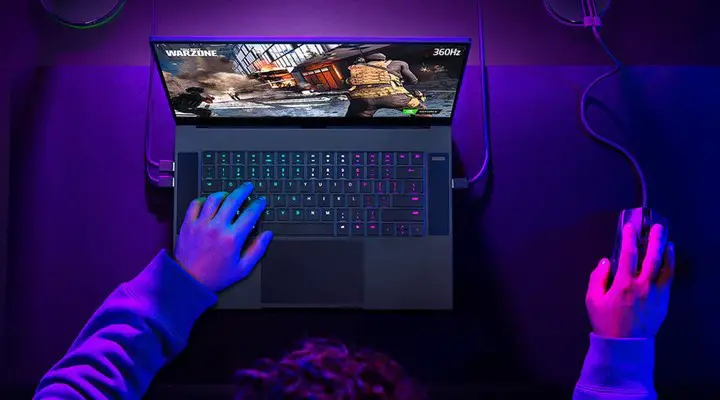
This means that in the future, ultra-thin notebooks that adopt the Evo specification can have certain game and video processing capabilities while having features such as long battery life. diverse needs.
In some display features, Intel’s Arc has also followed the footsteps of NVIDIA and AMD, such as “fashionable” features such as ray tracing, super-resolution (Intel XeSS), and anti-tearing (Intel Speed Sync). Intel also arranges for Arc. It is available on all Arc models.
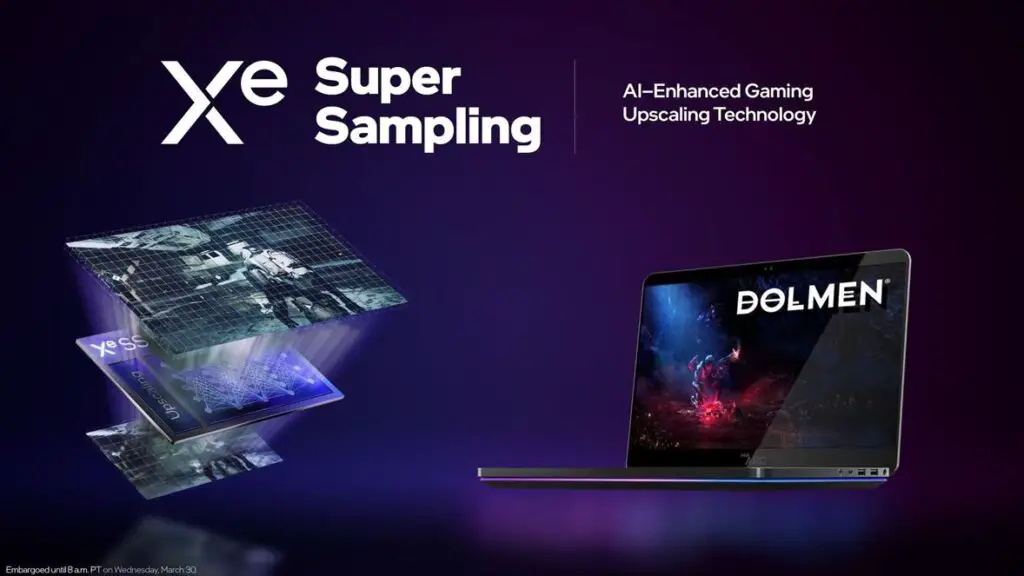
Among them, Intel’s XeSS technology is similar to NVIDIA’s DLSS and AMD FSR, which can use AI algorithms to upgrade low-resolution pictures to high-resolution levels.
To put it simply, in some scenes with little dynamic changes, the original 1080P picture can get a similar 4K look and feel after XeSS processing. Compared with the native rendering of 4K pictures, the load of the graphics card is much lower.
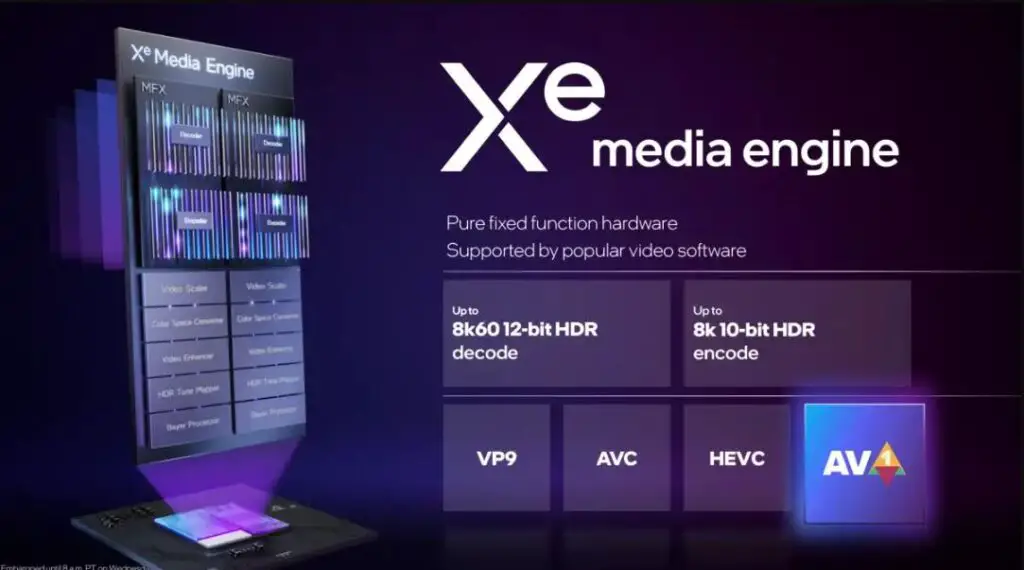
Another major advantage of Arc graphics card lies in the video codec. In addition to supporting mainstream standards such as VP9, AVC, H.264, and H.265, Arc graphics card also supports the currently popular AV1 standard.
AV1 encoding is a new generation of open source video codec standard launched by the development media alliance composed of giants such as Amazon, Apple, Arm, Cisco, Meta, Google, Huawei, Intel, Microsoft, Mozilla, Netflix, NVIDIA, Samsung, and Tencent.
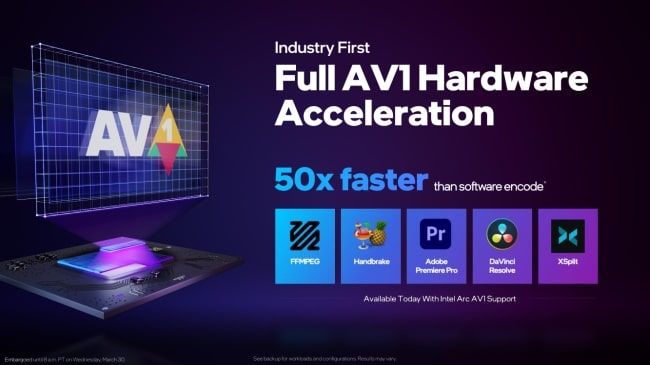
Intel emphasized that Arc is the first graphics card with built-in AV1 hardware codec, which can provide AV1 hardware acceleration for software such as DaVinci, Premiere Pro, FFMPEG, etc., which will help promote the further popularization of the AV1 standard.
Double U collocation, work is not tired
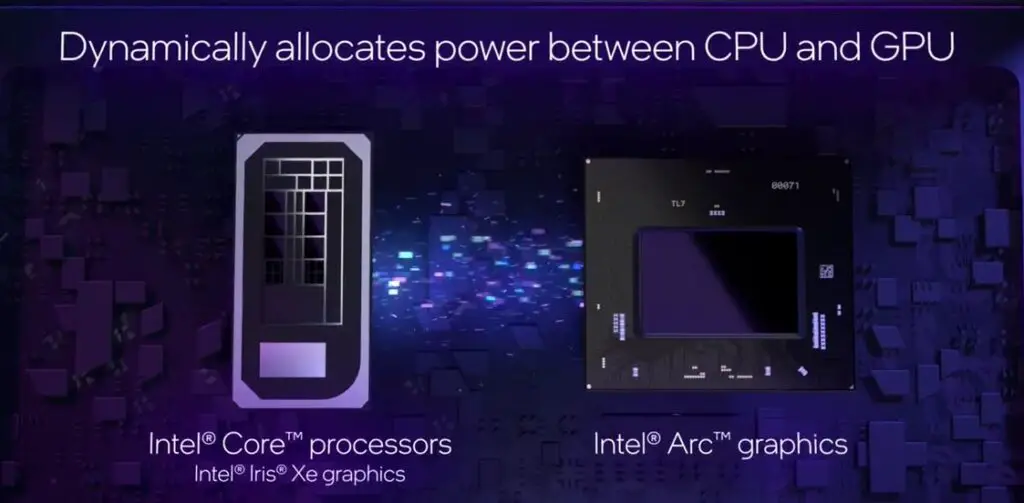
Another important feature of the Arc graphics card is that it can be linked with its own 12th-generation Core processor and its core display to exert stronger performance through collaborative work, which Intel calls Deep Link technology.
Deep Link technology includes three functions: “dynamic power sharing”, “super coding” and “super computing power”.
In the past, CPU and GPU were like two separate components, and everyone worked independently of each other.
“Dynamic power sharing” simply means that the CPU and GPU are bundled together. When processing high-load images, more power can be allocated to the GPU, and when the GPU is idle, it can be allocated to the CPU, reducing the power of the whole machine. consumption.
For notebook platforms that focus on power control, “dynamic power sharing” can bring more flexibility to performance scheduling.
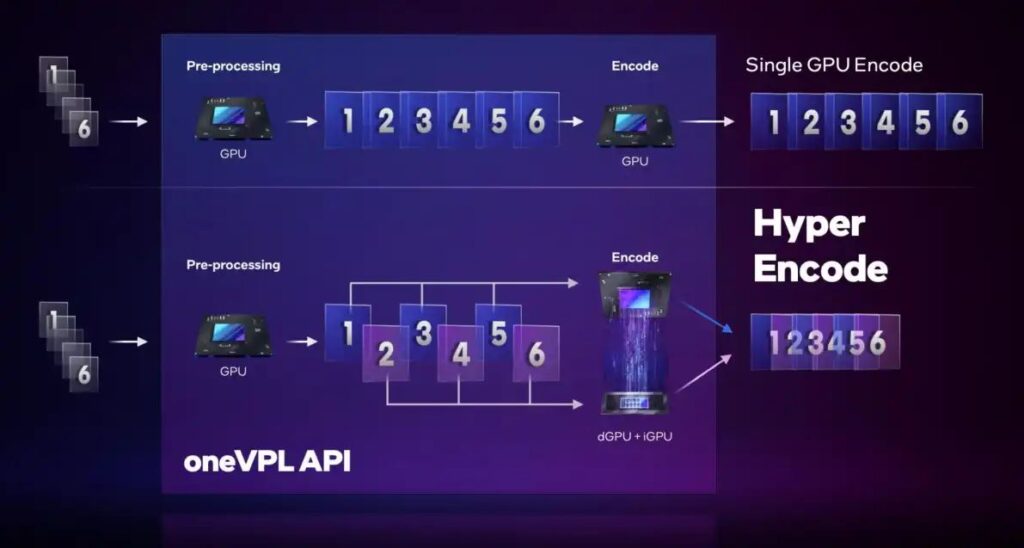
“Super coding” is also well understood. Since the core display of the CPU and Arc are from the same family, the two can work together during video coding, sharing the pressure of the independent display and improving the efficiency of coding.
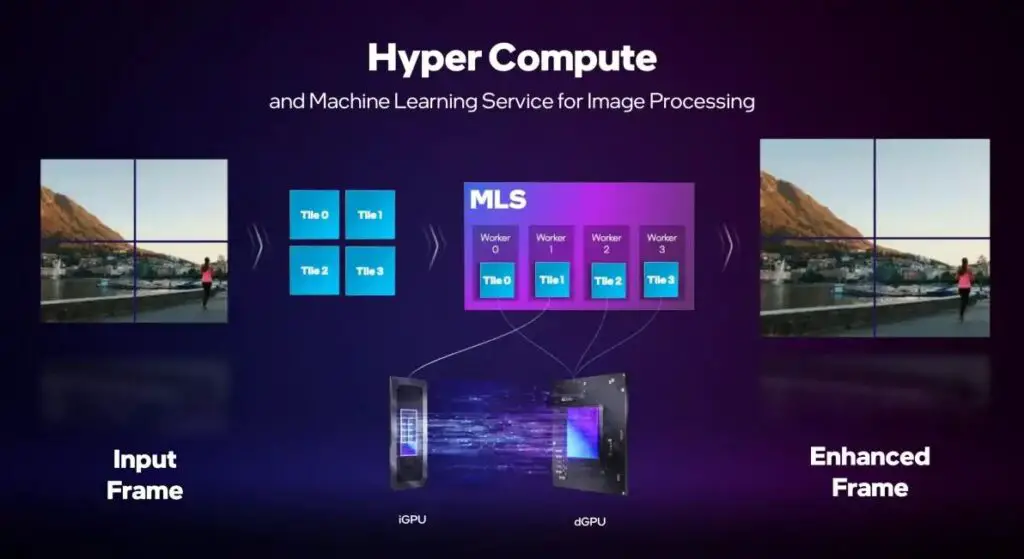
“Super computing power” can intelligently assign a task to two graphics cards, and process them rationally through their respective computing engines to enhance the overall computing performance.
It is not difficult to see that Intel, as a latecomer in the market, is trying to use its advantages across the dual platforms of processors and graphics cards to compete with Nvidia and AMD.
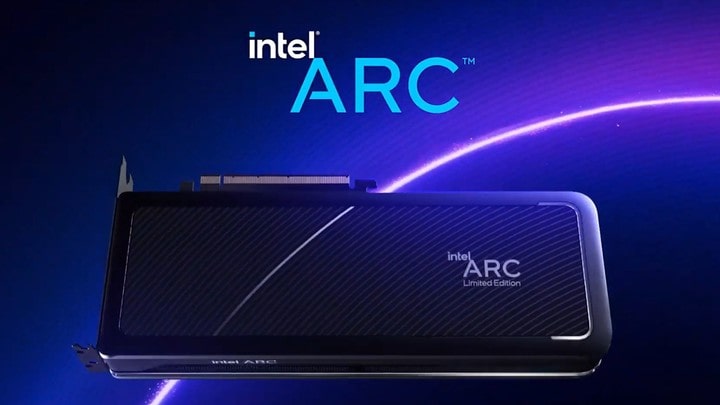
At the end, Intel also predicted that the desktop-class Arc graphics card will be released this summer, and now the Arc 3 is like an appetizer, and the real meal is yet to come.
At present, it is too early to make a conclusion on the success or failure of Arc. After all, besides performance, it is its price that really determines the success or failure of a graphics card.
Image credits: Intel




